This article is part of an editorial series of Expert Talks by Virtuos aimed at sharing the learnings and best practices in global game development and art production. In this installment, Nguyen Minh Nhat, Art Director, and Anrich Van Castricum Wolmarans, Senior Artist at Sparx* – a Virtuos Studio, take us through the process of world-building in Unreal Engine 4.
In the video game industry, world-building is the process of taking environment assets from a library of game art and putting them together to create interesting compositions and beautiful environments for games. World-building has become a key component of game development, with many industry-leading games making it one of their priorities such that players get a highly immersive experience.
Inspired by the viral 3D Community Render Challenge hosted by Clinton Jones, better known as ‘pwnisher’, on YouTube in 2021, Virtuos’ Central Technology Group (CTG) organized a company-wide Unreal Engine world-building challenge titled “New Horizons”. The contest provided our Virtuosi the opportunity to experiment with level creation and exhibit their creativity outside of their work projects.
Throughout the challenge, participants were tasked to team up and build any type of environment they found awe-inspiring using Unreal Engine 4.27 (UE4). At the end of the contest, our teams submitted many impressive and original works, but one of them particularly stood out to the jury.
“Trang An Simulated”
Created by Nguyen Minh Nhat, Art Director, and Anrich Van Castricum Wolmarans, Senior Artist at Sparx* – a Virtuos Studio, the piece is titled “Trang An Simulated” and highly inspired by the scenery in Trang An, Vietnam.
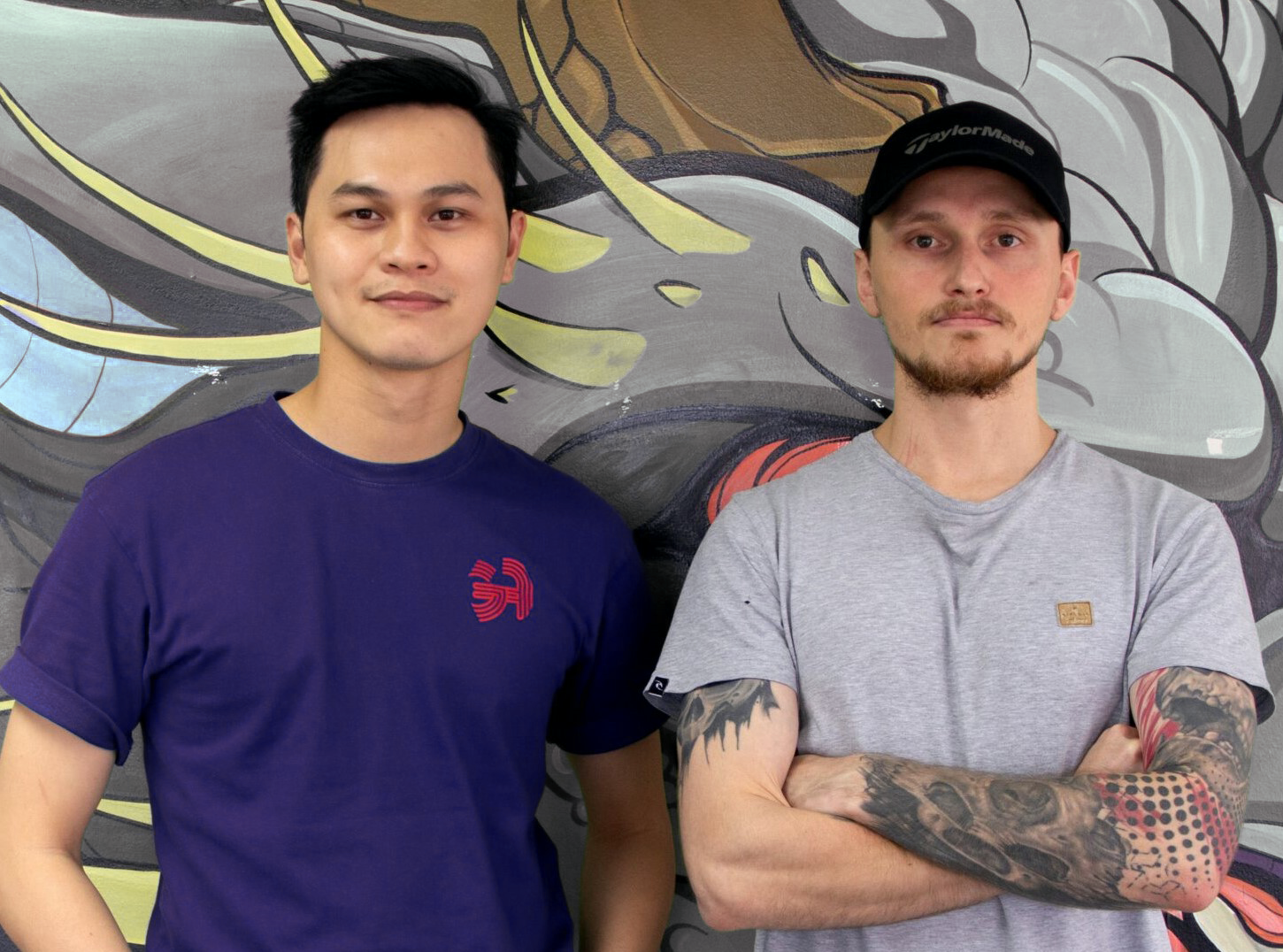
Nguyen Minh Nhat, Art Director (left) and Anrich Van Castricum Wolmarans, Senior Artist (right)
We sat down with Nhat and Anrich to learn how they created this breathtaking world from scratch in UE4.
The Making of Trang An Simulated
Hi Nhat and Anrich, thanks for joining us today! Could you tell us more about why you chose Trang An for this project?
Nhat: When we were brainstorming for this project, I knew I wanted to showcase the beauty of Vietnam. Another key point was to capitalize on our visual effects (VFX) expertise since Anrich and I are both in the special effects team at Sparx*.
We had many different ideas and places that we wanted to recreate and eventually settled on Trang An due to its beautiful scenery and iconic connection to Vietnam. Furthermore, we could make it from scratch using existing assets with the Megascan plugin in Unreal.
Anrich: Also, the composition of the scene in Trang An was more realistic and doable when we considered the given time frame compared to other options.
How did you come up with this simulation of Trang An?
Nhat: Anrich and I wanted to do some cool VFX, and we immediately thought of something supernatural and surreal. We took inspiration from the bubble in Annihilation (the movie) and integrated it with the scenery in Trang An; we held on to this idea till the end of the project. The world we created is a beautiful, scenic valley surrounded by many limestone mountains and rivers, but it’s nothing more than a simulated world on the verge of collapse. Our character manages to escape before he disappears with everything else.
Could you walk us through the process of making this animation?
Nhat: I initially went straight to Unreal to sculpt Trang An’s mountains and landscape using an image I found on Google. However, I stumbled upon some limitations while sculpting as I couldn’t get the specific 3D shape I wanted, so we couldn’t go with this method.
We used Maya to sculpt the meshes as we wanted to get the dimensions right from the beginning.
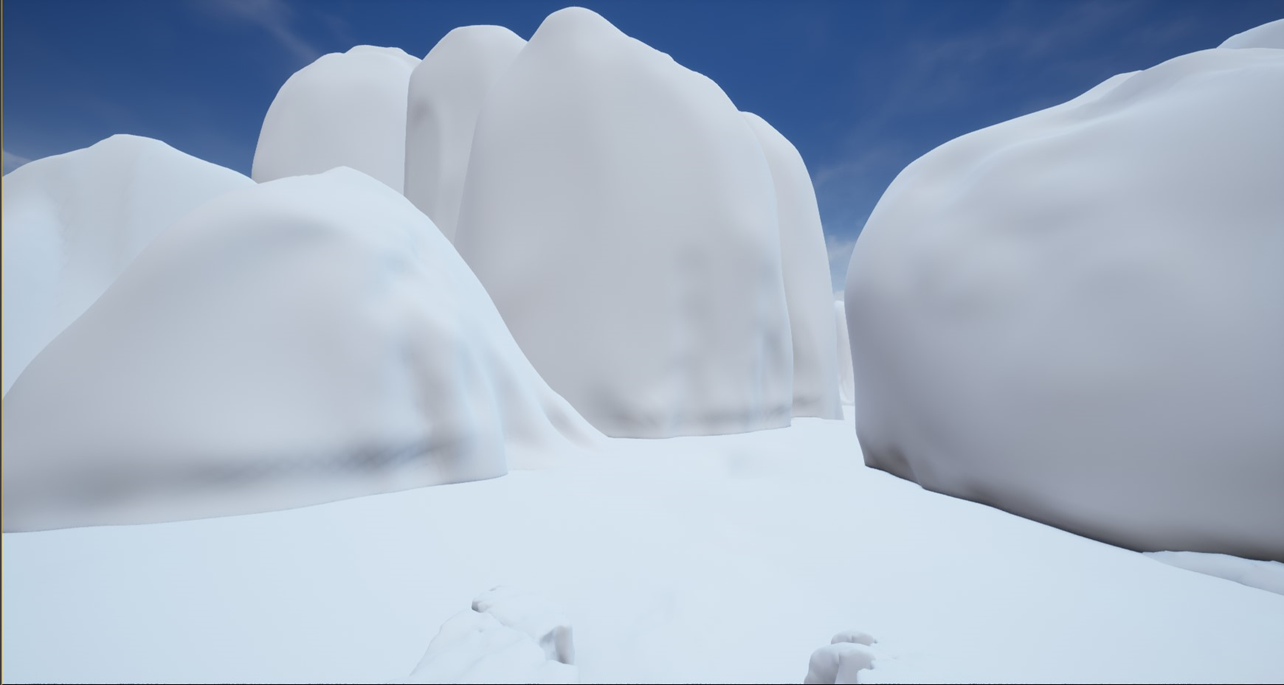
Sculpted meshes from Maya with default lighting and sky
We also did some research to ensure that the scale was accurate, such as the height of the mountains and the types of foliage found in the area. After importing it back into UE4, we assigned the material for the base meshes in our first pass.
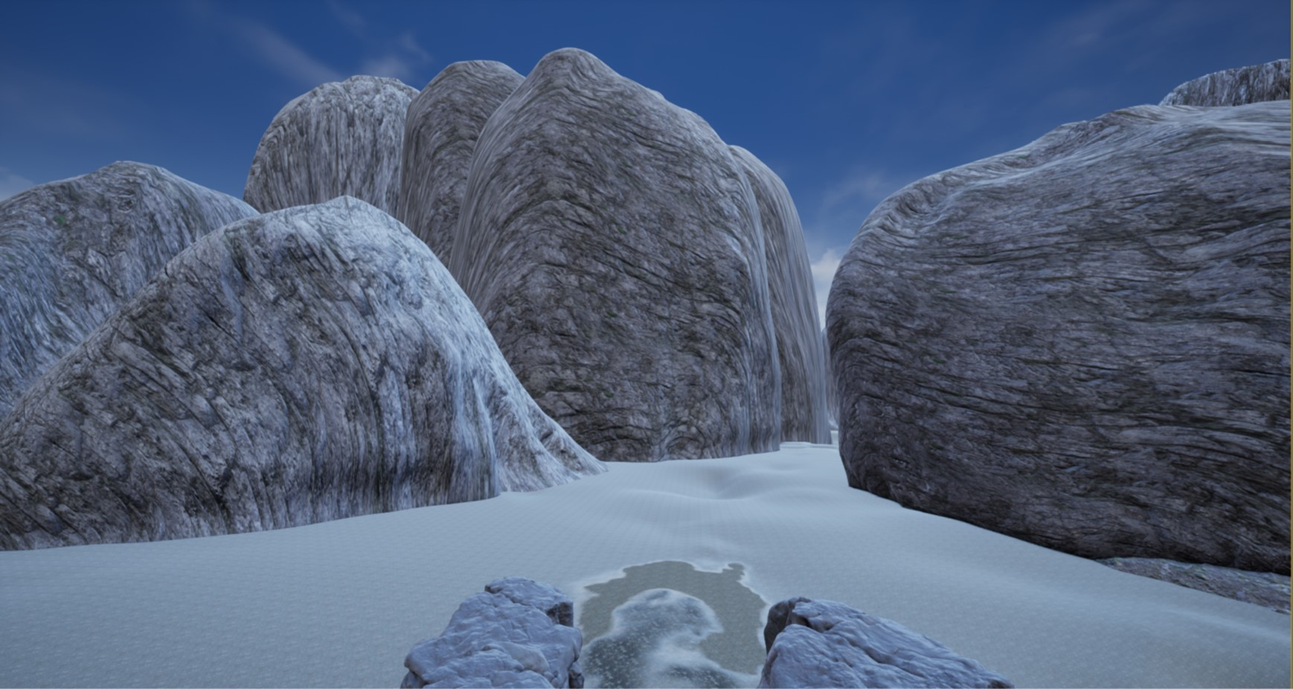
First pass: assigned material for base meshes
Next, we used existing assets in Megascan to add more detail to the mountains.
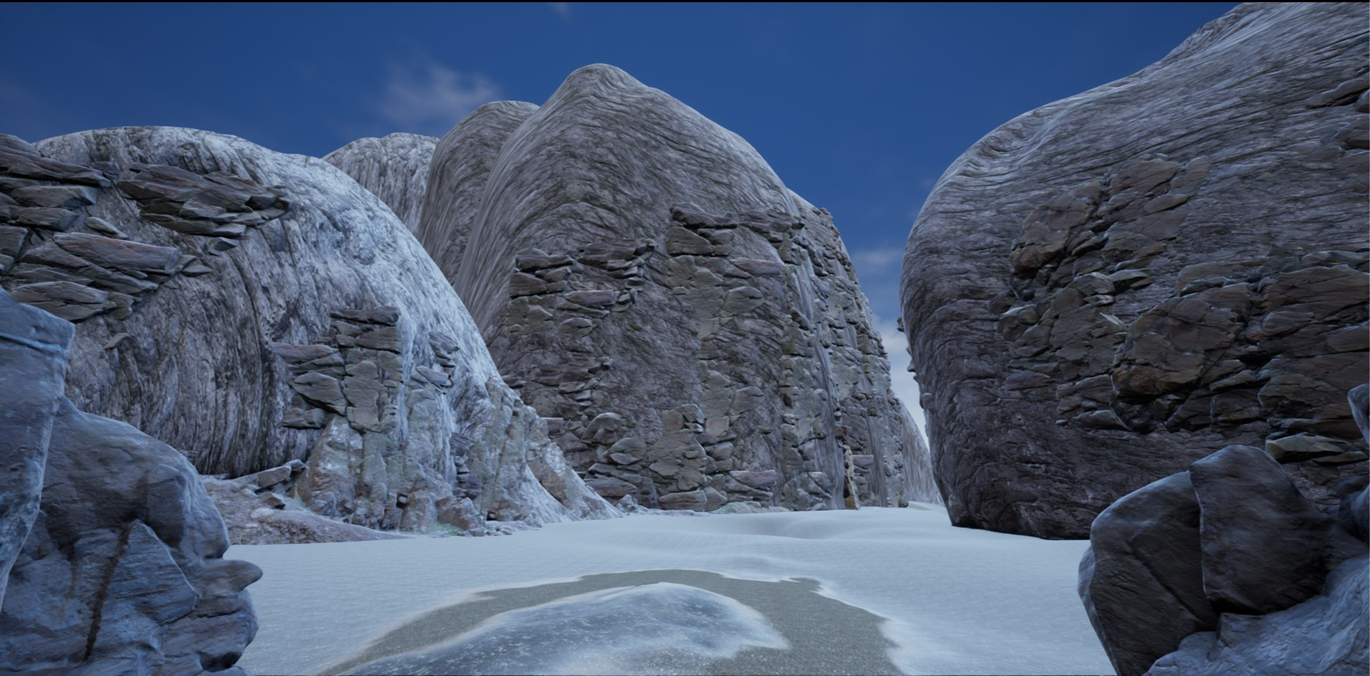
Second pass: using assets found in Megascan to add more detail
In our third pass, we used the water shader and ocean tool from UE4 and further modified it with assets from Megascan to match our desired look. We added more layers to the ground material to add wetness to the border where the land meets the water.
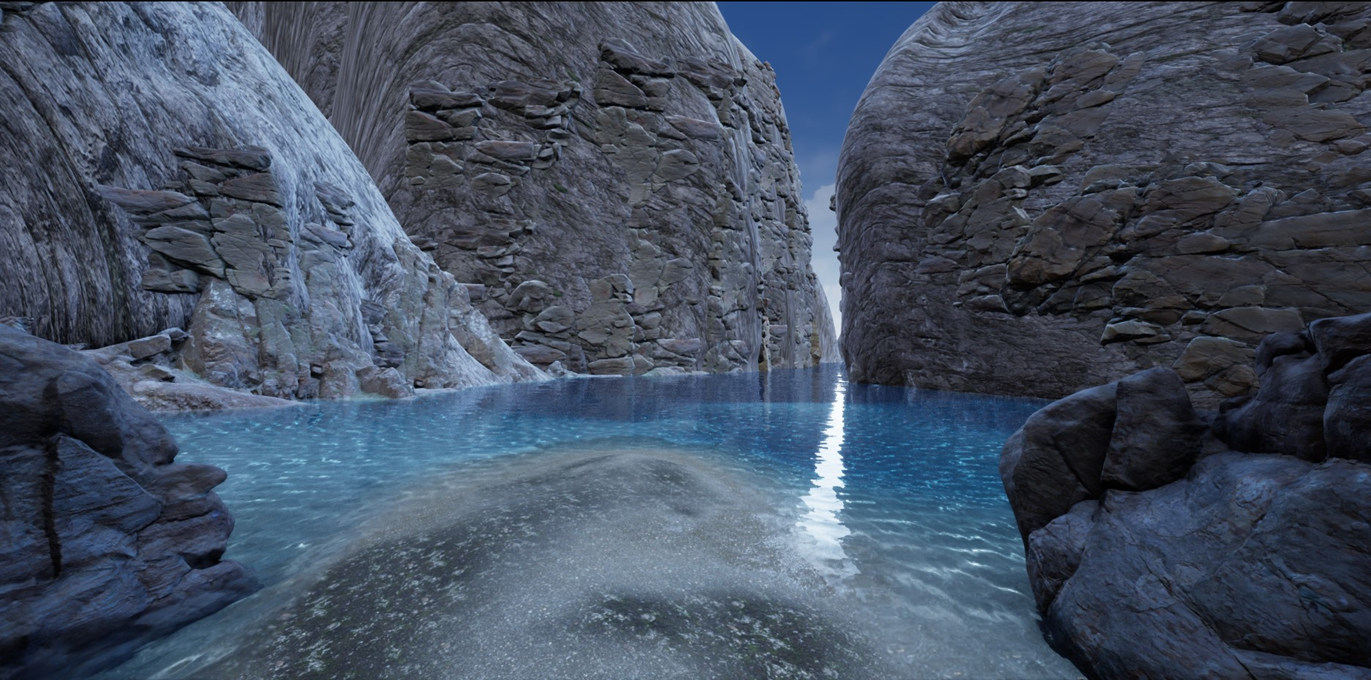
Third pass: used water shader from UE4
Next, we added the first round of lighting and vegetation assets. Since there weren’t any existing assets of the specific native foliage in Megascan, we took an existing plant asset. We modified the color, material, and size to match the look we wanted.
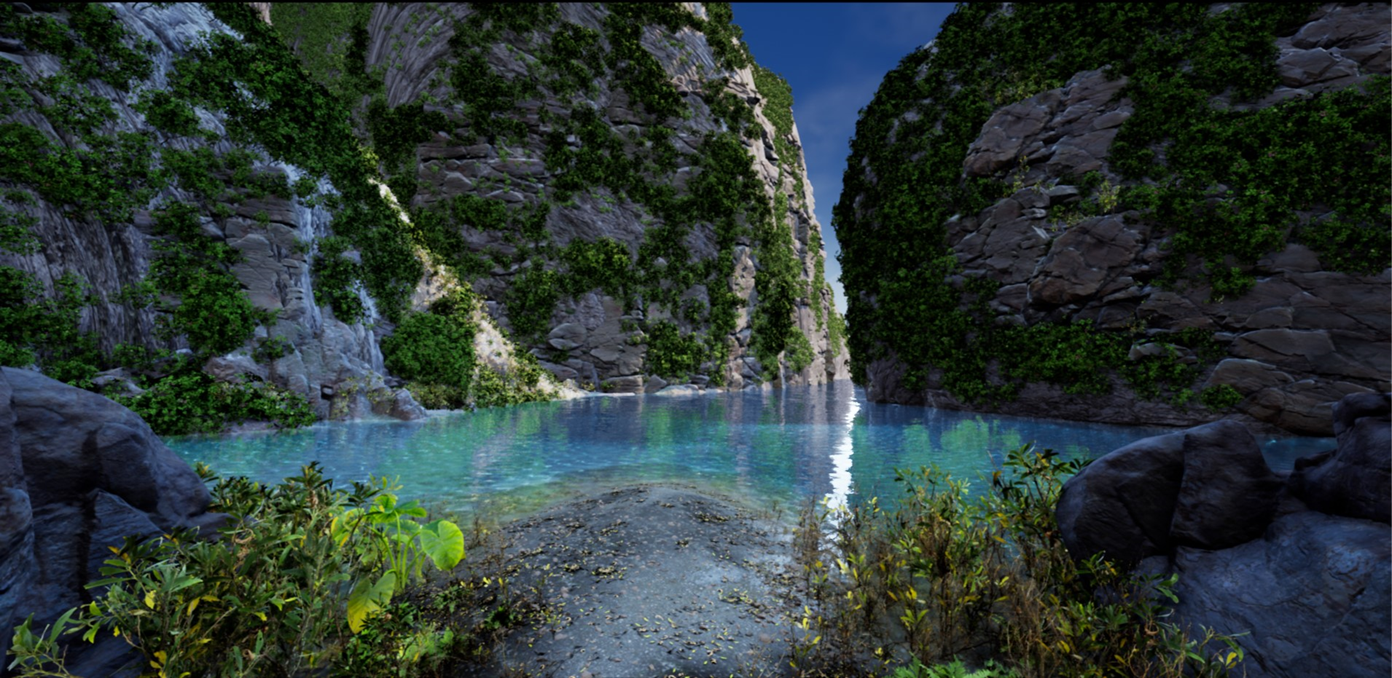
Fourth pass: added the first round of lighting and vegetation assets.
We added some post-processing, color correcting, and atmospheric fog in our fifth take. Almost there!
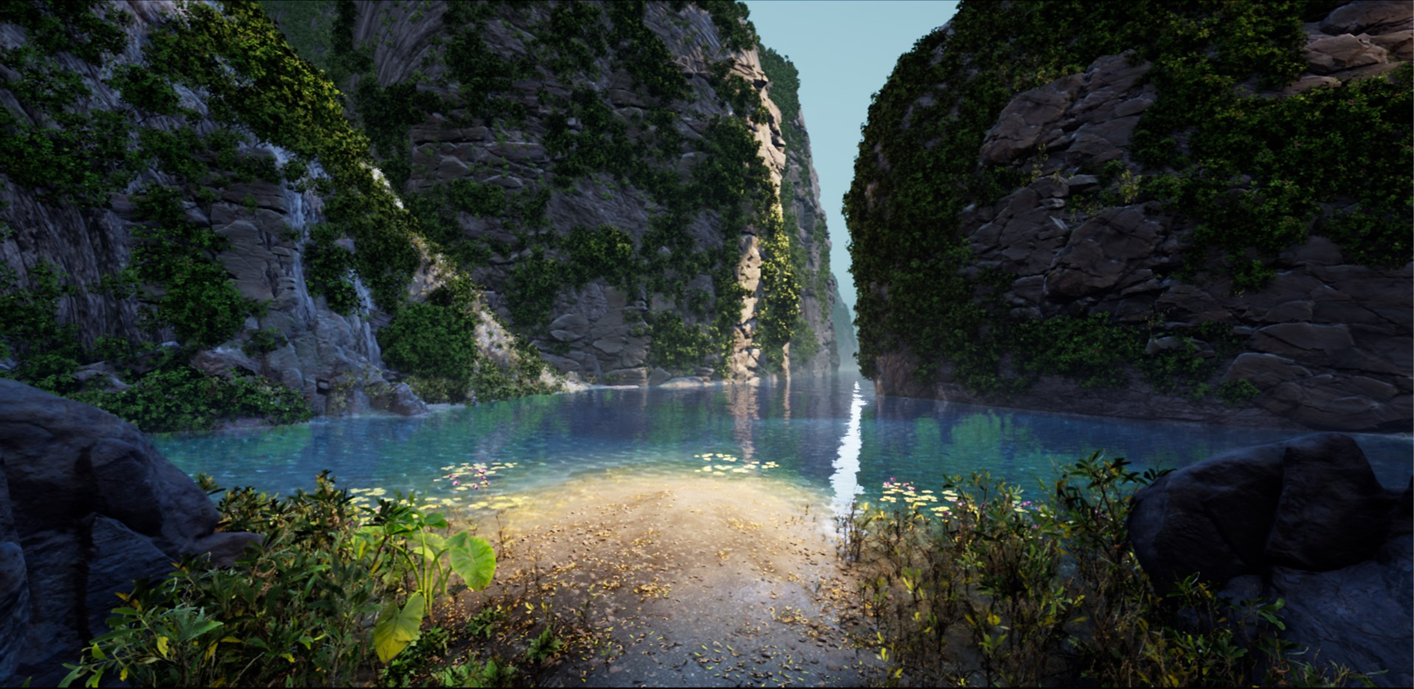
Fifth pass: Post-processing
In our sixth pass, we added some life to the scene, including some swimming ducks, birds in the sky, and a little more atmospheric fog.
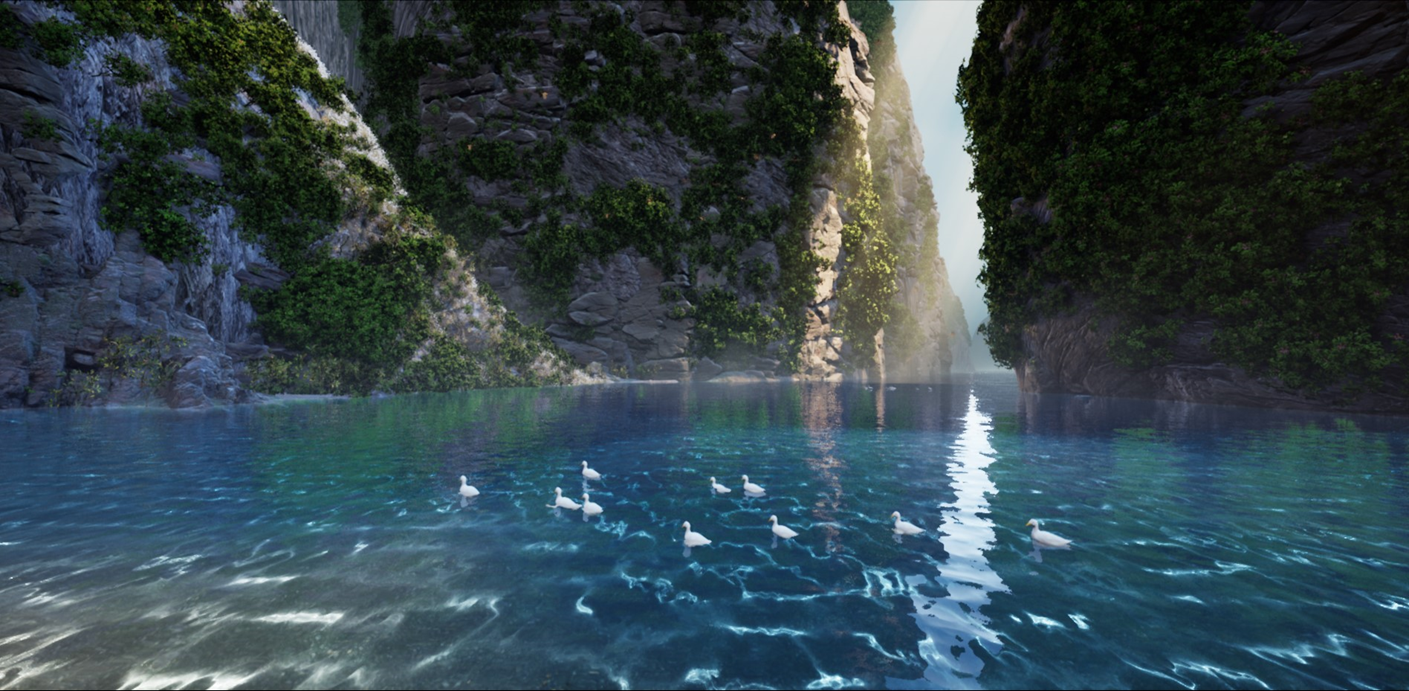
Sixth pass: adding life to the scene
We modeled and rigged the birds in Maya before rendering them as a flipbook, so we could easily attach them to the Niagara plugin in UE4 to make a flock. At a glance, it looks simple because we only see them from a distance.
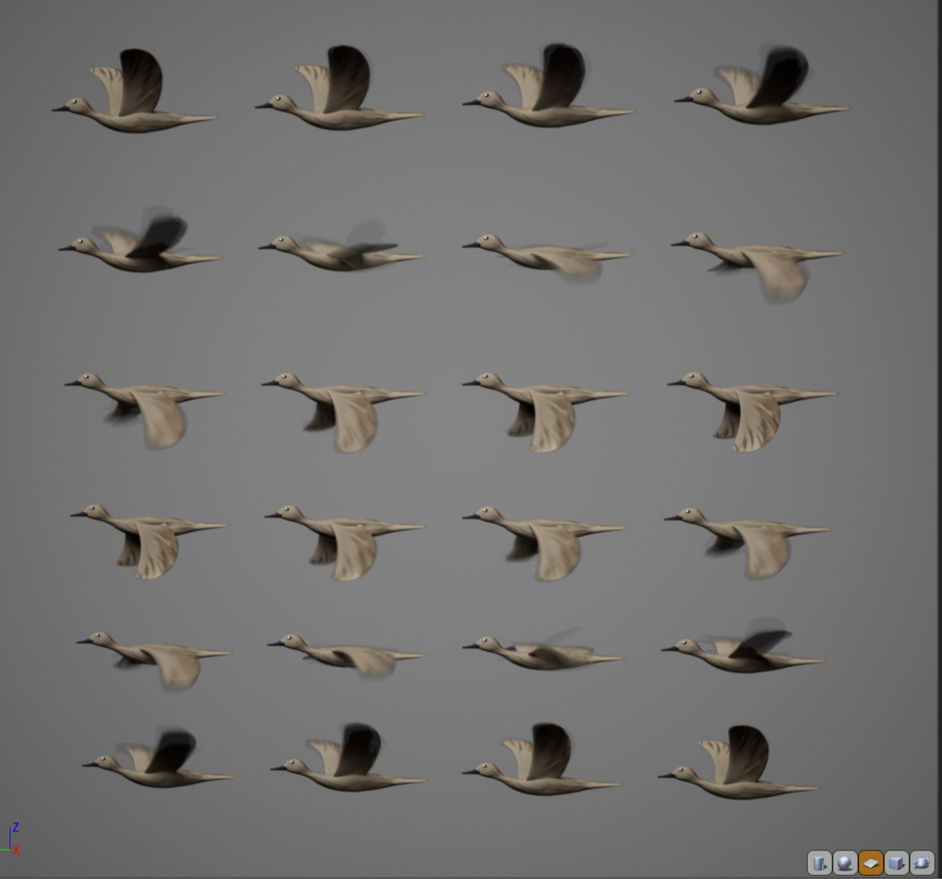
Creating the birds in Maya
How did you create the barrier/bubble effect in the video?
Nhat: The development process of the barrier is pretty straightforward. We used multiple layers of multicolor texture panning on top of each other to create a color-shifting look, then used UE4’s Depth Fade node to mask out the areas that are close to any surfaces. The distortion of the barrier seen in the video was simply set up like a glass material.
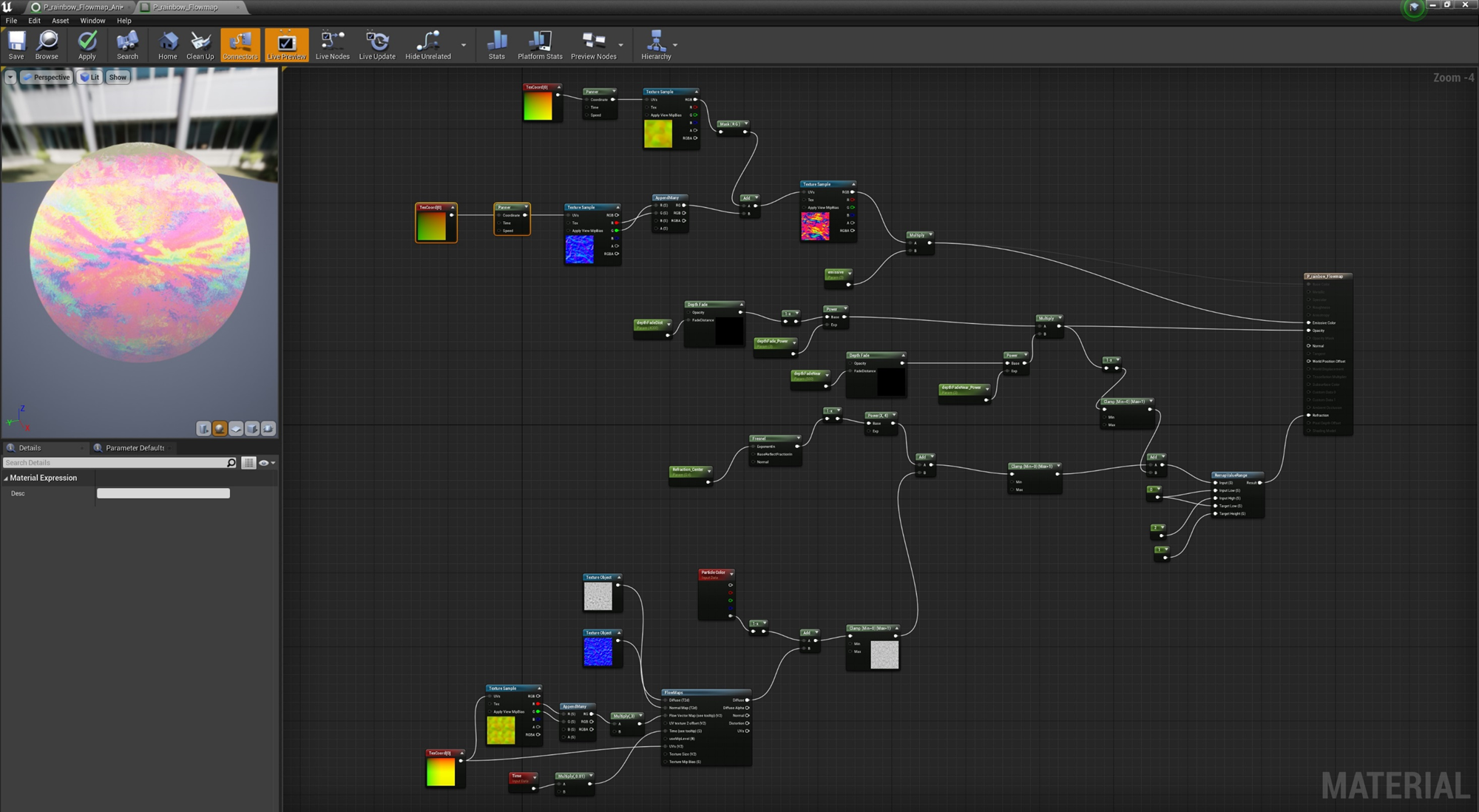
All the parameters are controllable via a sequencer, so we could art direct it easily. Along with the barrier, we had multiple things to control, such as lighting, atmospheric fog, and a few other effects.
Controlling the distortion effects of the barrier using a VFX sequencer
What are some of your reflections on the project?
Nhat: I like to dabble with level creation as a hobby in my free time, and I’ve always been interested in how UE can handle realistic lighting, so it was great that I had the opportunity to dabble with that during this challenge. It was one of my favorite parts of this project. At first, I tried to make a low-light and dark environment as I wanted to keep the surreal vibes. Later, I wanted to show more of the environment, so I turned it up again and created more contrast with the lighting, such as the reflection on the water.
Anrich: It was a great learning experience overall, and I think this challenge helped me improve my project management and time management skills. A key thing I learned was taking initial ideas, trimming them down, and not getting too attached to them. It was important to be realistic, especially when working within a limited time frame.
Kudos to Nhat and Anrich for depicting an incredible simulation of Trang An. Through internal activities and challenges such as the New Horizons challenge, employees at Virtuos are given plenty of opportunities to test their abilities while learning from one another. And with cutting-edge tools, technology, and training at their disposal, our passionate game creators constantly strive to create the best experience and quality for players everywhere.
